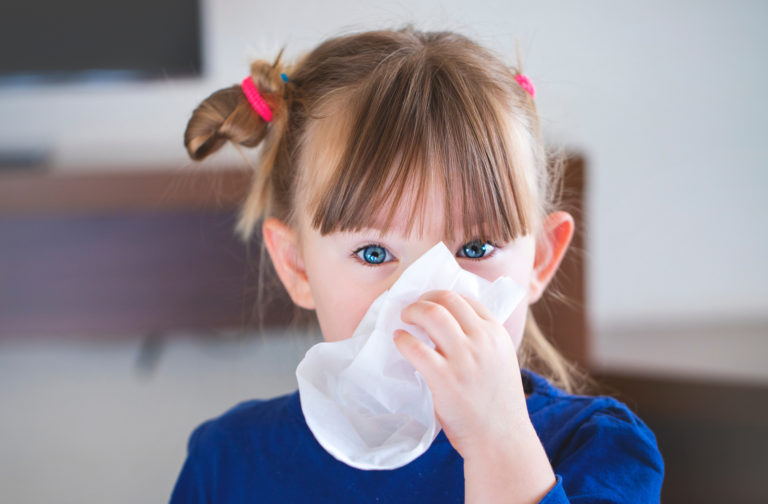Your Indoor Air Quality is More Important Than you Think
Canada and winter go hand in hand – and whether you love our winter season or are counting the minutes until spring, you can count on a lot of snow, cold temperatures, and an abundance of winter activities. Another thing you can count on? Fluctuating humidity.
Sudden dryness is often the first sign that winter is approaching. However, there are ways to keep your home humid and comfortable in the cold, dry winter months.
What is Humidity?
Humidity is the amount of water vapour in the air. The relative humidity is the amount of water vapour present in the air compared to the greatest amount of water vapour the air can hold at that temperature.
In the winter months, the air is cold, which means it holds less water vapour. In simple terms, cold air is dry air.
What is the Ideal Humidity Level for my Home?
The ideal indoor humidity level is between 30% and 50%. At this level, you will enjoy the benefits of moisture in your air without inviting problems that can arise from too much moisture, such as:
- Mold and bacteria growth
- Increase of airborne toxins
- Musty smell
- Condensation on windows
- Wet Insulation
The Effects of Dry Air in Your Home
Depending on the temperature outside, your furnace may run continuously in the winter months. Unfortunately, heating your home lowers the indoor humidity level even more, which can make your home extremely dry.
Low humidity can affect your physical health and well-being. It can also compromise your furniture and the infrastructure of your home. Low indoor humidity levels may also lead to:
Dry Skin, Hair, & Eyes
When there is a lack of humidity in your home, you may notice your skin becomes dry and itchy. This is because when air is dry, the water in your skin evaporates more quickly, making your skin feel dry and tight. Our skin’s ability to retain moisture can be lowered by as much as 25% during the winter months.
The same is true of our hair and eyes. Dry indoor air draws moisture away, making our hair dry and brittle, and our eyes feel dry and uncomfortable.
Dry Nasal Passages & Related Illnesses
For some individuals, extremely dry air can cause another uncomfortable and unpleasant symptom: itchy, uncomfortable nasal passages. Because the majority of breathing is done through the nose, low humidity levels can cause the inside of the nose to become dry and irritated. This is not only painful, but it can also cause nosebleeds.
Similarly, your nose is counts on hair and mucus to act as a filter against viruses and other airborne bacteria. When your mucus is dry, it can make you more vulnerable to colds, sinus infections, and the flu. It is important to keep your nasal passages moist at all times.
Static Electricity
Dry air can also increase the amount of static electricity found in your home.
When the temperature drops, the air can’t retain moisture as effectively. Moist air is more conductive, so it can better regulate electrical charges. The lower the humidity level, the less static electricity can be absorbed by the air. This causes static electricity to cling to your hair, clothes, bedding, and other surfaces.
Wood Shrinkage & Warping
Wood is a natural material that expands and contracts relative to changes in its environment. When the humidity in your home is low, wood can often shrink and warp. This includes wood furnishings, as well as hardwood floors and even door and window jams.
Peeling Wallpaper & Chipping Paint
Low indoor humidity levels can dry out your walls. If you notice your paint is starting to chip and your wallpaper is blistering or peeling, it may be caused by a lack of moisture in your home.
Many of today’s modern homes are built to be as airtight as possible to help with energy efficiency. But this means a mechanical ventilation system must be installed to help ensure proper airflow.
HRVs and ERVs ventilate your home by continuously bringing in fresh air from outside. This helps to circulate stale air as well as control humidity levels within your home. During the winter months, these systems work to trap more humidity inside your home when exchanging heat through the ventilation system. This can help regulate the humidity levels while also keeping your air fresher and your family healthier.
Whole-Home Humidifiers
Whole-home humidifiers are a type of humidifier that attaches directly to your furnace, controlling air humidity levels at all times. They’re more efficient and more effective than portable humidifiers, so you and your family will be healthier and more comfortable all winter long.
Portable Humidifiers
While portable humidifiers can do the trick in smaller spaces, they have limited water tanks and usually cannot provide a whole-home solution. Furthermore, humidity levels are difficult to regulate, it is difficult to regulate proper humidity levels. If you do opt for a portable solution, ensure you clean it thoroughly to ensure it is not spreading allergens.


